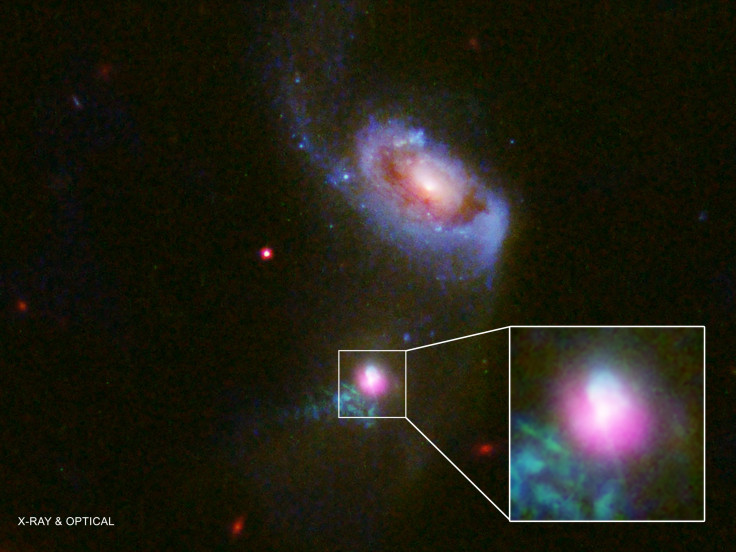How Does A Supermassive Black Hole Burp? Scientists Capture Two Belches

Just about everyone can relate to somebody feeling the urge to burp after a big meal, and supermassive black holes are no exception.
Scientists using NASA’s Chandra X-ray Observatory and Hubble Space Telescope recently caught one of these gigantic space monsters letting out a little wind twice in a row, making for some interesting observations. According to a study in the Astrophysical Journal, the supermassive black hole at the center of the SDSS J1354+1327 galaxy — but called J1354 in shorthand — had just had a meal of gas before it let out its twin belches.
The black hole is millions, if not billions, of times larger than the sun, NASA said, and was emitting X-rays as its tremendous gravity and magnetic force warmed up the gas “to millions of degrees.” Although it gobbled up a good portion of that gas, some of it was “expelled in a powerful outflow of high-energy particles.”
“The X-ray data also provide evidence that the supermassive black hole is embedded in a heavy veil of dust and gas,” NASA explained, referring to the series of eating and belching as being part of a “two-course meal.” It got kicked off when the galaxy collided with another, bringing lots of material to the black hole.
After the first gassy burp, according to the study, the second one happened less than 100,000 years later — a relatively quick turnover by universe standards.
Supermassive black holes are commonly found at the centers of galaxies, including the Milky Way. Their burpy outflows are common as well.
Scientists have recently simulated what powerful outflows called relativistic jets look like as they beam out of a black hole. When a disk of material called an accretion disk rotates around a black hole on a tilted axis, it wobbles around in a movement that also affects those jets, according to the simulation. The whole setup together appears to wiggle in a way that’s similar to how a top spins around on a flat surface.
The jets are made of radiation and particles that are zipping out from the black hole along magnetic field lines.
© Copyright IBTimes 2024. All rights reserved.





















